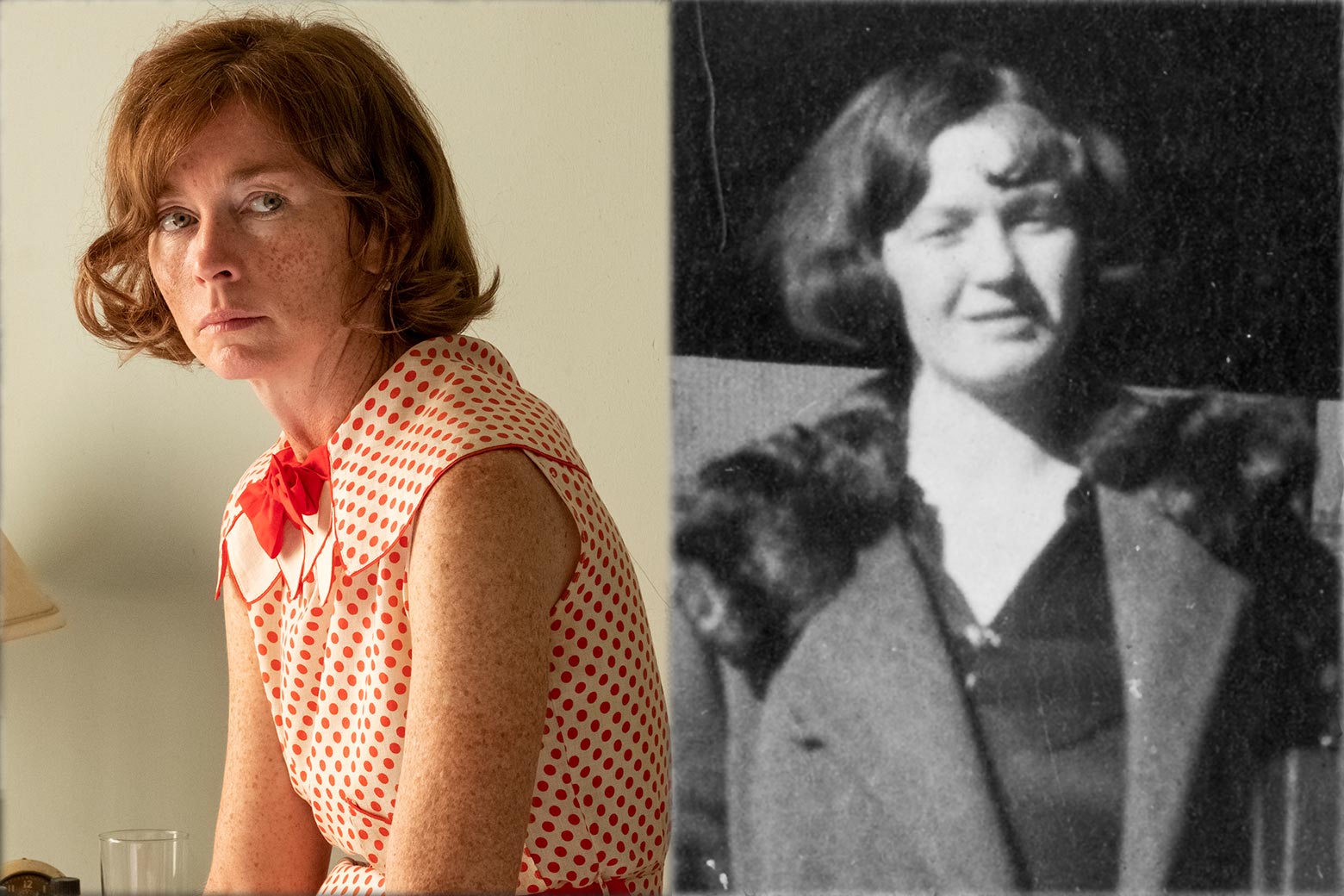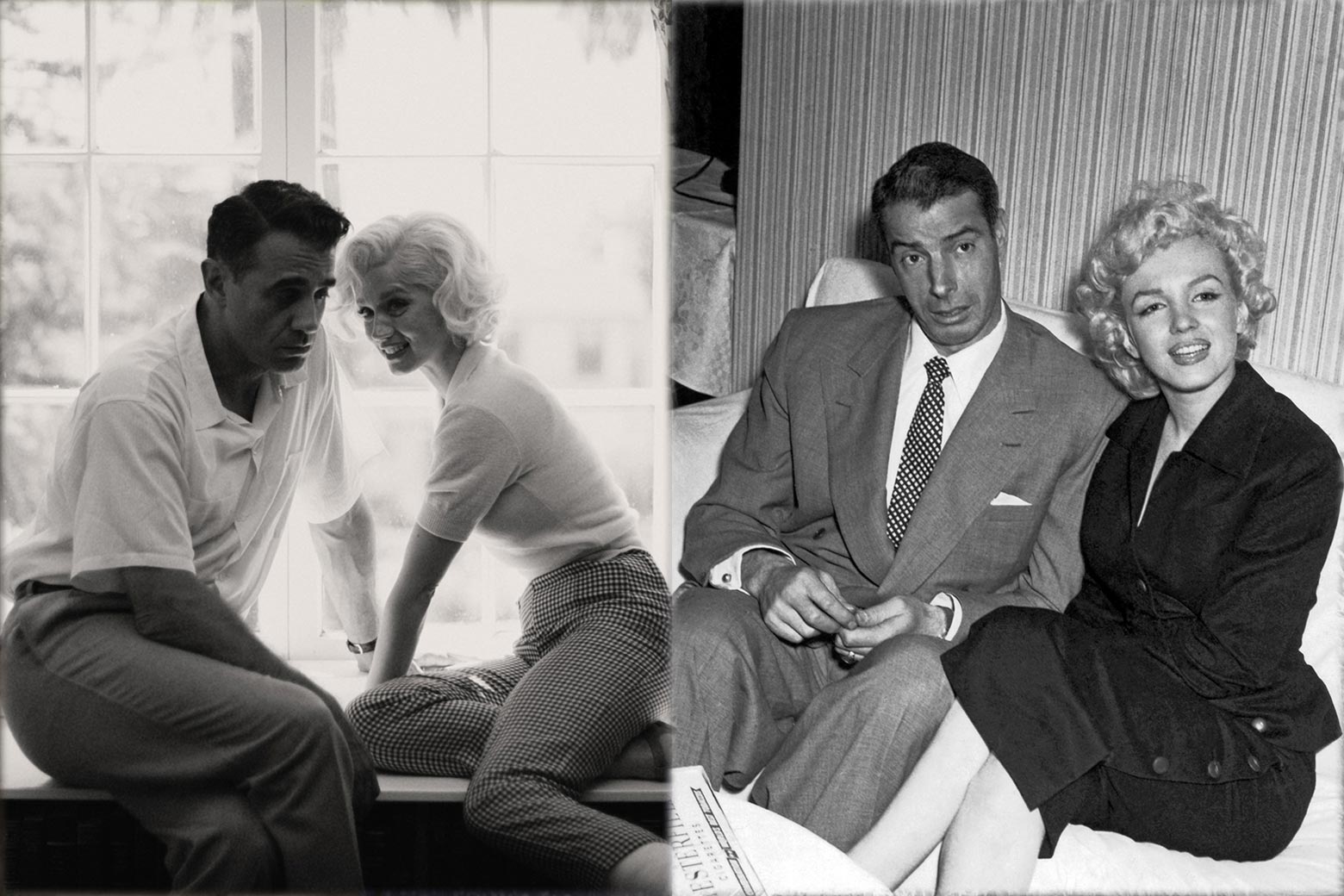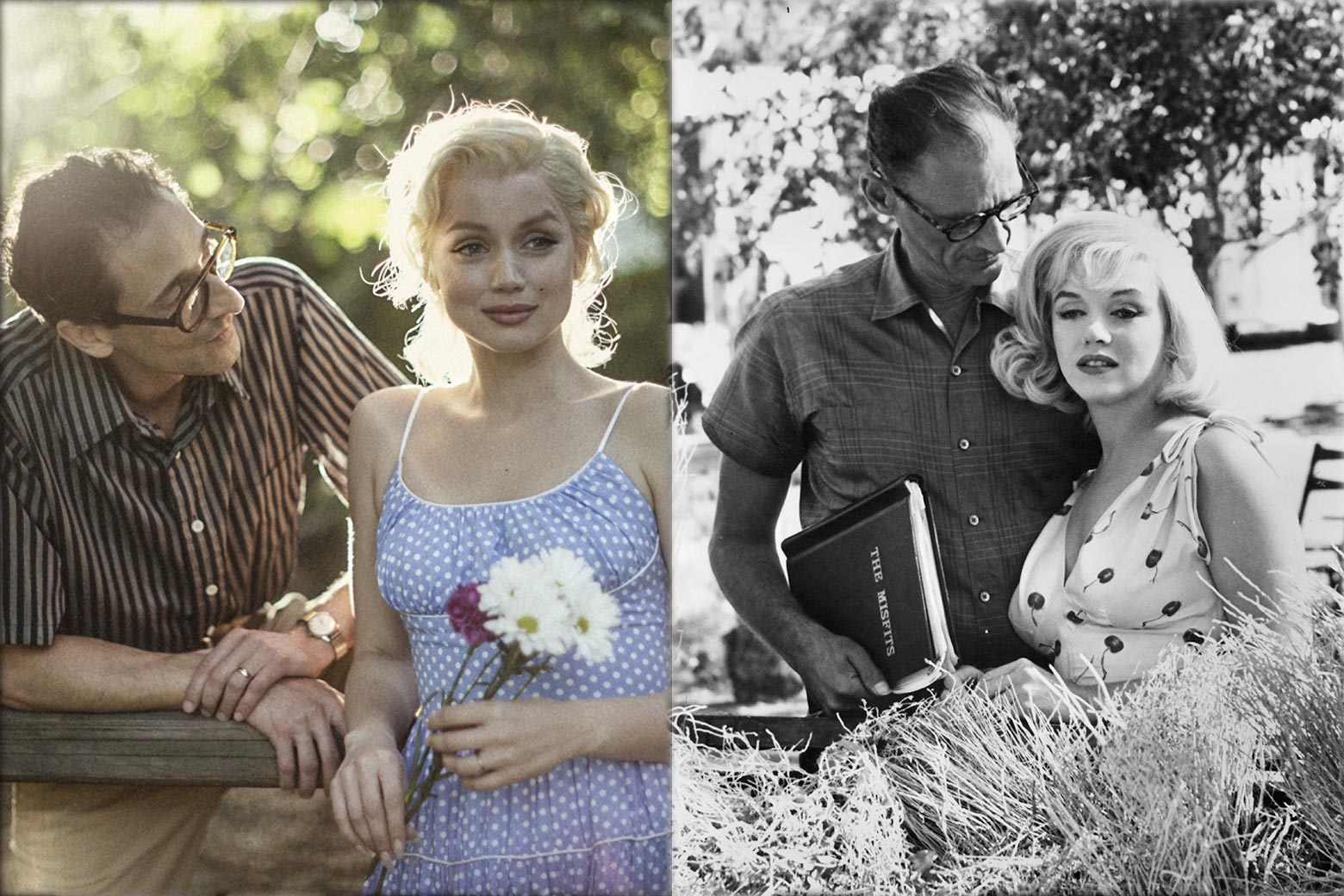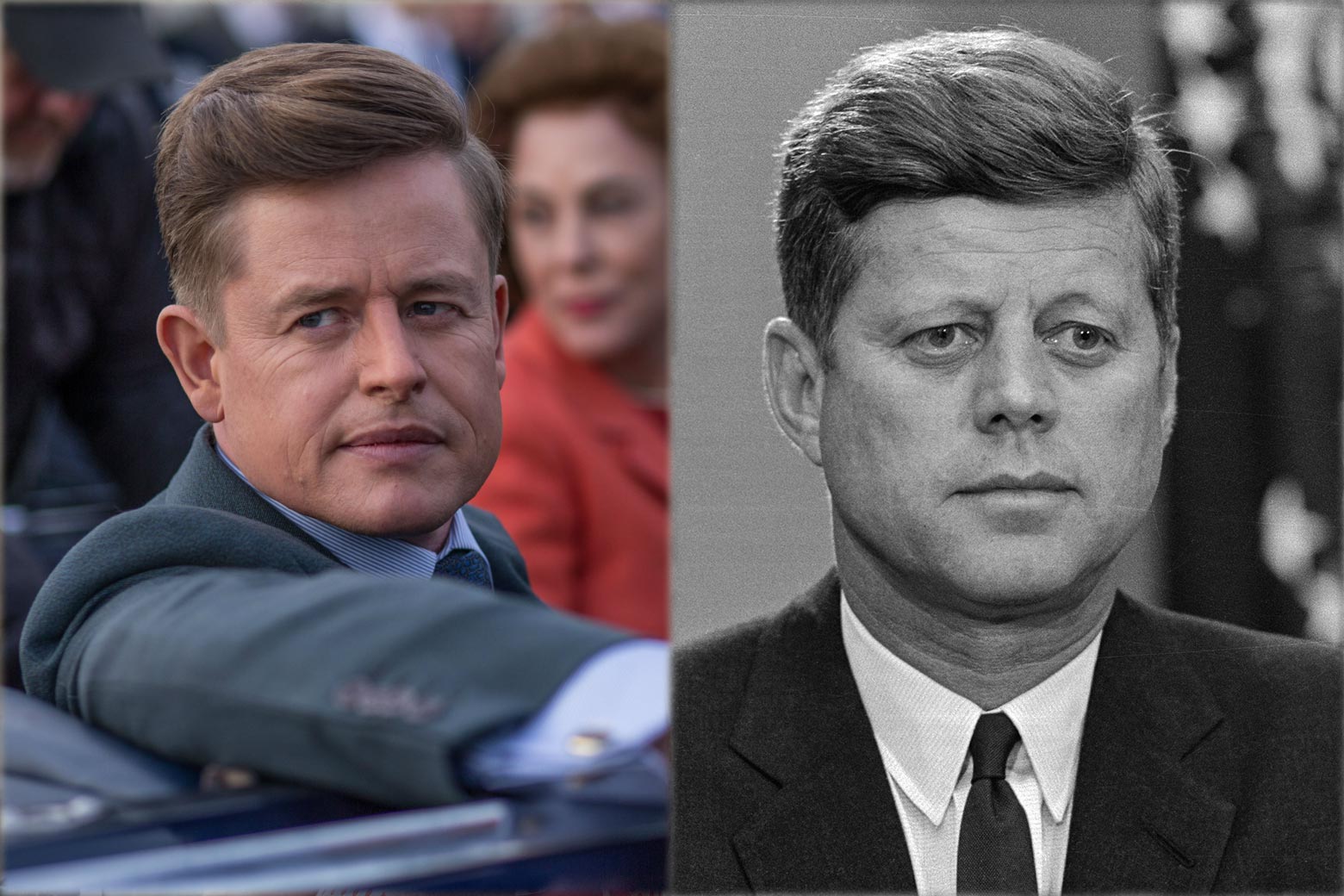Netflix’s Blonde is not so much a biopic based on the facts of the late Hollywood icon’s life as a speculative dive into her psyche, very much in the vein of Spencer, Pablo Larraín’s tribute to another iconic blond, Princess Diana. The style is similarly associative rather than linear, with ample use of fantasy, dreams, and allusions to fairy tales, acknowledging the story is an exploration of our mythic projections as much as a look at the real woman. Both films present their heroines as sensitive, guileless Red Riding Hoods navigating a forest full of wolves, always underestimated and constrained by outmoded conventions. And since their untimely deaths, the historical truths of both their stories have become shrouded in a fog of conspiracy theories and commercial exploitation (with both inspiring a hit tribute single from Elton John).
Discovering what’s fact and what’s fiction in Blonde is further complicated by the source material for the film being not Monroe’s actual life, but Joyce Carol Oates’ fictional reimagining of that life in her 2000 novel of the same name, which Oates herself has said is not a biography or even a biographical novel, but a “distillation” of the star’s life, a work of fiction. At any rate, we unpack what’s true to life and what’s legend.
Was Monroe Part of a Throuple?


While taking classes at the Actors Circle in L.A., Marilyn (Ana de Armas) meets two fellow students, Charlie “Cass” Chaplin Jr. and Edward G. Robinson Jr., both aspiring actors struggling in the shadows of their famous fathers. As free-spirited, troubled, and good-looking as Marilyn herself, the two men relate to her as her true identity, Norma Jeane Baker, rather than being blinded by her Marilyn Monroe alter ego like so many of the men she meets, and soon they are in a fun, passionate three-way relationship where she can really be herself. Even after it ends, they remain friends throughout her life (although she is unaware of how they have occasionally betrayed her confidence).
This is largely invention. In reality, neither Chaplin nor Robinson were known to be gay or even bisexual, let alone in a relationship with each other. There is no evidence that Robinson was ever more than an acquaintance of Monroe’s, although rumors of a brief affair between Monroe and Chaplin did surface in Hollywood scandal sheets. The rumors were confirmed by Chaplin himself in his 1960 memoir, in which he wrote, “One of the young girls I had a relationship with at this time [c. 1947] … was the same age as I, 21, an attractive, petite, unknown movie actress named Norma Jean Dougherty who was under contract at Twentieth Century-Fox.” However, Chaplin went on to recall, “from a professional point of view it was absolutely necessary for her to be seen together with all kinds of movie stars to get the papers interested in giving her a mention. The result was an estrangement between us, and I have not seen her for several years.”
By some accounts, it was not Monroe’s stepping out with movie stars for publicity that broke up the relationship, but Chaplin discovering her in bed with his brother Sydney.
Monroe would surely have been reacquainted with Robinson in subsequent years when he had a small role as a gangster in Some Like It Hot. However, the film omits this episode and suggests any subsequent contact after the physical relationship ended was by mail. Also, according to the film, Robinson called Marilyn shortly before her death with the news that Chaplin had died. In reality, Chaplin outlived Monroe by nearly six years.
Sadly, the real Chaplin and Robinson were nowhere near as attractive as the actors who play them (Xavier Samuel and Evan Williams, respectively).
Was Monroe’s Mother Mentally Ill?


In the film, little Norma Jeane lives with her divorced mother, Gladys (Julianne Nicholson), who frequently lashes out at her daughter, blaming her arrival for making Norma Jeane’s father, who was married to someone else, break off their relationship. Gladys’ behavior grows increasingly erratic, including putting Norma Jeane in a car and driving toward a wildfire dressed only in a nightgown, until finally she tries to drown the child in the bathtub, after which she is committed to a state institution for the hospitalization of the mentally ill. Norma Jeane is taken in by a kindly neighbor for a bit after she knocks on her door but is eventually transferred to an orphanage.
Monroe’s mother, Gladys Baker, did have a history of mental illness. Indeed, both of Gladys’ parents died in institutions for the confinement of the mentally ill and her brother died by suicide. Baker had a mental breakdown in January 1934 and was diagnosed with paranoid schizophrenia, after which she was in and out of institutions for the rest of her life.
After Gladys’ breakdown, Monroe was taken in by her mother’s close friend, Grace Goddard, who became her legal guardian. However, she left after a few months because Goddard’s husband molested her, an episode omitted from the film. She moved in with her mother’s sister-in-law and then to the Los Angeles Orphans’ Home before finding a more stable existence as a teenager with a friend of Goddard’s known as “Aunt Ana.” In 1946, after being released from the hospital, Gladys came to join her daughter there before disappearing again.
This was not Monroe’s first time in foster care. Gladys had dropped her daughter off with a foster family when she was only 2 weeks old. Monroe stayed in this relatively stable and secure environment for the next seven years, until 1933, when her foster mother judged that mother and daughter should be reunited. The actor’s communication with her mother, as the film depicts, remained sporadic throughout her life, but when she picked her stage name, she chose her maternal grandmother’s last name, Monroe.
Did Monroe Have a Father Fixation?
Gladys shows little Norma Jeane a photograph of a handsome man and says that he is the girl’s father, but that she can never mention it because he was married, and people would know she was illegitimate. She reveals he also worked at “the studio” but refuses to tell the girl his name. The film suggests that the central pillar of Marilyn’s emotional life was a search for this missing father and desire to win his love, hence her marrying older men and calling them, with a distinct lack of subtlety, “Daddy.”
In fact, Gladys was married to Martin Mortensen when Monroe was born, and that is the last name on her birth certificate (although she was baptized as Norma Jeane Baker), so she would not have been considered illegitimate. That said, according to DNA evidence revealed in a 2022 documentary on French television, Monroe’s real father is Charles Stanley Gifford, Gladys’ boss at RKO studios, where she worked as a film editor (not an actress, as the film suggests), but this has never been confirmed.
As for Monroe having a father complex, she did have two husbands who were considerably older, made several attempts to track down her father, and told interviewer William J.
Weatherby, “For years I thought having a father and being married meant happiness,” but there is no proof she was as fixated as the movie depicts.
Was Joe DiMaggio Abusive?


Her star rising rapidly, Marilyn is wooed by Joe DiMaggio, recently retired Yankee and national baseball hero. He promises to protect her and give her a more normal life and family. However, Monroe finds it difficult to become the Italian mama DiMaggio wants (she can’t cook, for starters), while he is threatened by her increasingly high profile and the attention she elicits from other men. During some arguments, his anger boils over and he hits her.
This is largely true. DiMaggio, 12 years older than Monroe, tried to control her career, discouraging her from taking roles that reinforced the sexualized blond-bombshell image she was best known for and encouraging her to become a full-time housewife. He also wanted her to dress more modestly and not outshine him in public. And if she broke these rules, DiMaggio, who later got treatment for anger management, was physically abusive. His son, Joe DiMaggio Jr., recalled waking up to “the sound of my father and Marilyn screaming. … After a few minutes, I heard Marilyn race down the stairs and out the front door, and my father running after her. He caught up to her and grabbed her by the hair and sort of half-dragged her back to the house. She was trying to fight him off but couldn’t.”
Despite this, DiMaggio and Monroe remained close after their marriage of nine months was dissolved. When Monroe died, it was DiMaggio who identified her body, organized the small funeral, and chose her headstone.
Did Monroe Have a Miscarriage and an Abortion?


Blonde depicts (in gory detail) Marilyn having an abortion after her breakup with the two Juniors, although whether this was her decision and arose, as the film suggests, out of her fear that her mother’s mental instability could be hereditary or whether the studio arranged it so she could start shooting Gentlemen Prefer Blondes on schedule is left ambiguous. A few years later, Marilyn is married to playwright Arthur Miller and thrilled to be pregnant when she trips and falls while bringing a tray to a beach picnic, resulting in a miscarriage.
In fact, Monroe did have a miscarriage while married to Miller in 1956, then lost an ectopic pregnancy in 1957, followed by a second miscarriage in late 1958. As for whether she ever had one or more abortions, there’s little concrete evidence, but her friends told biographers that the driven actress had many abortions, with one friend, photographer Amy Greene, claiming that she had as many as a dozen, some of them back-alley procedures, leading to long-term reproductive damage.
Was Marilyn a Victim of the Casting Couch?
The film shows an excited Marilyn meeting with studio head “Mr. Z,” a meeting that might be her big break if it results in a contract with “the studio.” Instead of an audition, she finds she is expected to perform fellatio on him. Then he anally rapes her. Later, she is told that she’s got the part (a small but standout role in All About Eve, one of her first screen appearances).
“Mr. Z” is most likely Darryl F. Zanuck, the head of Twentieth Century-Fox—the studio Monroe ended up being under contract to—who was notorious for his “conferences” with starlets and what the New York Times called a “well-documented habit of flashing his penis at women.” However, according to Monroe biographer Anthony Summers, “Monroe recalled ‘casting couch’ sex encounters, but nothing suggests any of them were with Zanuck. In interviews with almost 700 people, I encountered nothing to suggest that any Hollywood producer raped Monroe.”
In its determination to portray her as a victim, the film omits Monroe’s standing up to Zanuck once she had obtained star clout. At the time, actors under contract were expected to do as they were told. “An actress isn’t a machine,” she told Life magazine, “but they treat you like one.” After Gentlemen Prefer Blondes proved to be Fox’s highest-earning film to date, Monroe expected to be able to command roles that showed off her range as an actress. When Fox offered her yet another blond bimbo part in a mediocre project, she returned the script with “TRASH” scrawled on the title page and refused to turn up to a shoot, instead flying off to New York, where she started her own production company. A furious Fox fired off numerous lawsuits and briefed journalists against her, but Monroe stood her ground. In January 1955, Zanuck gave in, withdrawing the lawsuits, raising her salary to $100,000 per film, and giving her the power to approve the script, director, and cinematographer on all of her films.
Did Monroe Have an Affair With JFK?


In the film, Kennedy has Secret Service agents deliver Marilyn to his bedroom for a booty call. Busy watching the launch of the Friendship 7 rocket (no heavy-handed imagery there) while FBI Director J. Edgar Hoover berates him over the phone, the president (Caspar Phillipson, reprising his role from Larraín’s Jackie) barely greets her before indicating she should get down to business. After treating her with as much respect and affection as he would a sex doll with no needs or personality of her own, he turns his back and the agents hustle her out—all wham, bam, with not even a thank you, ma’am.
There has been gossip and speculation about Monroe’s involvement with President Kennedy from virtually the moment she became a big star, speculation that became turbocharged after she serenaded him with a breathy rendition of “Happy Birthday” while wearing the famous skintight dress at a Madison Square Garden gala fundraiser in 1962. While there is no definitive proof, the balance of gossip suggests that Monroe and Kennedy had some sort of physical relationship.
They certainly knew each other. Jerry Blaine, a former Secret Service agent in Kennedy’s detail, told People that he was with JFK when the president socialized with Monroe at Peter Lawford’s house in Santa Monica in 1961 and then again at a party in New York following the gala. However, Blaine said, “they weren’t alone,” and he “never saw any evidence of an affair. But,” he added, “I don’t know what happened behind closed doors.”
On the other hand, Tony Oppedisano, Frank Sinatra’s friend and road manager who was also close to both Monroe and JFK, declared, “it was obviously a sexual thing, and I would expect that there were feelings on her side,” basing his knowledge on conversations he had over the years with Sinatra. For Monroe, he said, it was more than a fling. “She respected him; she admired him. She loved what he was doing with the country … but she wasn’t about to break up [the president’s] marriage, so she wouldn’t let it go that far, even if she felt that deeply.”
There’s also some doubt as to whether it was more than a one- or two-night stand. According to Monroe biographer Donald Spoto, Monroe told her masseur, Ralph Roberts, that a hookup at Bing Crosby’s house in Palm Springs in March 1962, shortly after her divorce from Miller, “was the only time of her ‘affair’ with JFK. … A great many people thought, after that weekend, that there was more to it. But Marilyn gave me the impression that it was not a major event for either of them: it happened once, that weekend, and that was that,” Roberts recalled.
What seems highly dubious is that Monroe would let Kennedy treat her as dismissively as is suggested by Blonde, even though the womanizing president was notoriously not a romantic when it came to his conquests. For one thing, she was no longer an insecure aspiring starlet, but one of the world’s biggest movie stars, and had already been married to two of America’s most high-profile men and involved with numerous others (including Marlon Brando), so was unlikely to be blinded by glamour or power.
For another, according to a documentary based on 650 taped interviews Summers conducted for his biography, Monroe and JFK went way back to 1954, when he was the junior senator from Massachusetts and, having been introduced by Lawford, the two would meet for drinks at a dive bar popular with movie stars called the Malibu Cottage whenever Kennedy was in California, so it’s not like she was some sort of presidential groupie.
Yet another biographer, James Spada, maintains that after JFK dumped Monroe in 1962, Bobby Kennedy saw his chance and made his move. Oppedisano backs this up. “When things phased out with Jack, that’s when she picked up with Bobby, and I don’t think it lasted anywhere near as long or was as deep as it was with JFK,” he told People, suggesting she was motivated by wanting to get back at the president, and thought, “ ‘You’re not going to be with me, so maybe I’ll take up with your brother,’ ” an echo of her alleged affair with Chaplin’s brother.
Blonde movie accuracy: fact vs. fiction in Netflix's Marilyn Monroe biopic with Ana de Armas. - Slate
Read More

No comments:
Post a Comment